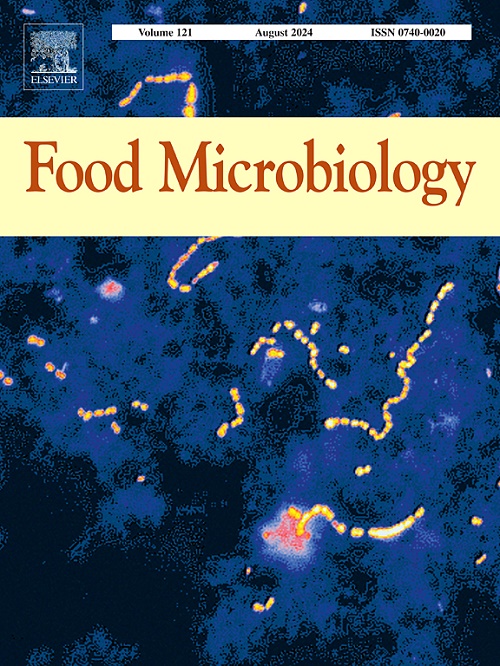A review of curcumin-mediated photodynamic bactericidal technology for food preservation: Limitations and improvement strategies
IF 4.5
1区 农林科学
Q1 BIOTECHNOLOGY & APPLIED MICROBIOLOGY
引用次数: 0
Abstract
Foodborne pathogens are a major cause of food safety incidents and pose a significant risk to human health. In response, the food industry is actively researching innovative microbial disinfection methods to address this growing concern. One promising solution is photodynamic inactivation, a non-thermal sterilization technique that has attracted considerable attention due to its broad-spectrum antibacterial activity, environmental benefits and cost-effectiveness. Curcumin, a food-grade photosensitizer, has shown promising photodynamic bactericidal activity, making it a strong candidate for food decontamination and spoilage prevention. Therefore, a timely and comprehensive review of Cur-mediated photodynamic bactericidal technology is essential to evaluate current research progress and stimulate future studies in food science. This review systematically analyses the limitations of Cur-mediated photodynamic inactivation in food applications based on the photosensitization mechanism of Cur. In addition, we summarize strategies to improve the photodynamic bactericidal efficiency of Cur through synergistic methods and innovative delivery systems. Finally, we discuss the challenges and outline future research directions in this field. Overall, this review aims to provide new perspectives and insights to advance Cur-mediated photodynamic bactericidal technology and promote its widespread use in the food industry.
姜黄素介导的食品保鲜光动力杀菌技术综述:局限性和改进策略
食源性病原体是食品安全事件的主要原因,对人类健康构成重大威胁。作为回应,食品行业正在积极研究创新的微生物消毒方法来解决这一日益增长的担忧。光动力灭活是一种很有前景的解决方案,这是一种非热灭菌技术,由于其广谱抗菌活性、环境效益和成本效益而引起了广泛关注。姜黄素是一种食品级光敏剂,具有良好的光动力杀菌活性,是食品去污和防变质的有力候选物质。因此,及时、全面地综述curc介导的光动力杀菌技术对于评价当前的研究进展和促进未来的食品科学研究至关重要。本文基于Cur的光敏机制,系统分析了Cur介导的光动力失活在食品应用中的局限性,并总结了通过协同方法和创新的递送系统来提高Cur光动力杀菌效率的策略。最后,我们讨论了该领域面临的挑战,并概述了未来的研究方向。综上所述,本文旨在为进一步发展curc介导的光动力杀菌技术,促进其在食品工业中的广泛应用提供新的视角和见解。
本文章由计算机程序翻译,如有差异,请以英文原文为准。
求助全文
约1分钟内获得全文
求助全文
来源期刊

Food microbiology
工程技术-生物工程与应用微生物
CiteScore
11.30
自引率
3.80%
发文量
179
审稿时长
44 days
期刊介绍:
Food Microbiology publishes original research articles, short communications, review papers, letters, news items and book reviews dealing with all aspects of the microbiology of foods. The editors aim to publish manuscripts of the highest quality which are both relevant and applicable to the broad field covered by the journal. Studies must be novel, have a clear connection to food microbiology, and be of general interest to the international community of food microbiologists. The editors make every effort to ensure rapid and fair reviews, resulting in timely publication of accepted manuscripts.
 求助内容:
求助内容: 应助结果提醒方式:
应助结果提醒方式:


